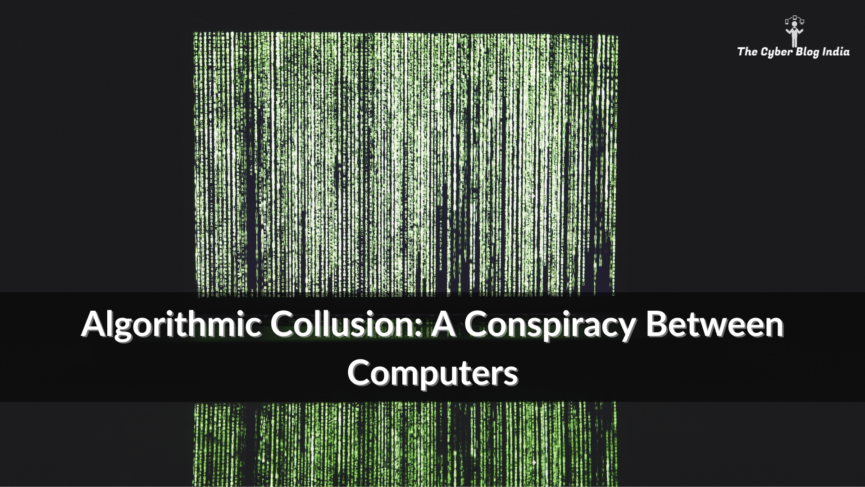Algorithmic Collusion: A Conspiracy Between Computers

Collusion is primarily a secretive agreement or cooperation between two parties intending to disrupt market equilibrium. Generally, companies competing against each other decide to work together and control the market to achieve market advantage. The Competition Act, 2002 (“Act”) prohibits such anti-competitive agreements that lead to collusion. These agreements allow entities to gain an unfair market advantage and abuse their dominant position to maximise their profits.
The Act addresses tacit collusion, where competitors indirectly coordinate actions to maintain market dominance. Their practices may facilitate anti-competitive behaviour, such as bid rigging, even without explicit agreements.
Besides bid rigging, collusion can take various forms, such as price fixing, market allocation, and output restriction. When firms agree to collude and maintain prices at a high level and restrict the entry of new firms, they form a cartel.
Algorithm as a Tool for the Detection of Collusion
When collusion occurs, some indications signal potential cartel activity. These abnormalities in the market can be detected easily by using AI-based algorithms. There are multiple ways to detect collusion in the market, such as:
- Statistical and Econometric Models: This includes various data analysis methods such as network analysis, data mining, social media analytics, and machine learning algorithms.
- Porter and Zona Method: Introduced by Porter and Zona in their article, this method examines the links between bids and costs while revealing the differences that can point to bid rigging.
- Real-Functioning Method: This method considers various factors to determine the likelihood of bid rigging in different businesses. An appropriate example is the Netherlands Competition Authority’s Competition Index.
- E-Procurement: This is where the entire process of bidding and procurement of the tender happens online, allowing algorithms to quickly detect any abnormalities that may indicate cartel activity.
What is Algorithmic Collusion?
The competitive landscape in the digital markets is evolving increasingly due to data integration with cutting-edge technologies like pricing algorithms. An increasing number of businesses are utilising computer algorithms to forecast market trends, enhance pricing models, and personalise services. All of these have the potential to increase efficiency. However, the extensive use of algorithms may have unintended anti-competitive consequences by making it more straightforward for businesses to establish and maintain collusion without formal agreements or interpersonal communication.
Types of Algorithmic Collusion
Ezrachi and Stucke, in their research paper titled Artificial Intelligence & Collusion: When Computers Inhibit Competition, introduced four possible types of algorithmic collusion.
- Messenger: In this instance, people decide to conspire, and computers carry out their will. The development of software that acts as a forum for sharing private information is an apt example. It is quite simple to apply competition law, and proof of the parties’ intentions is not necessary.
- Hub and Spoke: This pricing method uses just one algorithm to decide prices. If multiple businesses use the same algorithm, they might charge the same prices. This can make it seem like they are working together to set prices, even if they are not. One may need to understand the companies’ intentions to use the same algorithm for pricing.
- Predictable Agent: While not identical, the initiatives in this case use comparable algorithms. It is not necessary for an agreement to exist between the parties, nor does it need to be proven to exist. Similar algorithms may have anti-competitive impacts if most of the industry is using them. However, contrary to what Ezrachi and Stucke claim, such collusion is not inherently lawful. The authors state that the confirmation of intention is necessary. Moreover, applying comparable methods might be right on the cusp of conscious parallelism and implicit collaboration.
- Autonomous Machines: Using AI-based algorithms, the software sets the price without consulting the undertakings to maximise profit. If more such systems are available, they might be able to work together. By experimentation and self-learning, they may start working together without interference from the enterprises. According to the authors, responsibility in such a circumstance is questionable.
Tacit Algorithmic Collusion
Another form of algorithmic collusion would be tacit algorithmic collusion. Understanding the concept of tacit collusion is a prerequisite to comprehending tacit algorithmic collusion. It can be challenging to distinguish between two companies’ acts that amount to collusion and simple parallel pricing when they collaborate without explicit agreements or direct contact. This is known as tacit collusion. Price parallelism refers to businesses establishing similar pricing without any intention of collaboration. Tacit collusion refers to the deliberate alignment of prices with the intention of collusion. Discussions about these notions’ anti-competitive nature have been triggered by their differences.
In a notable case before the Competition Commission of India (CCI), there were allegations against Uber and Ola for engaging in algorithmic collusion to fix prices. Although the CCI ruled that algorithmically determined prices cannot collude, advancements in AI raise concerns about the potential for algorithms to collude tacitly.
I find the CCI’s ruling on Uber and Ola’s alleged algorithmic collusion shortsighted. Ignoring the nuanced nature of AI-driven price fixing overlooks the real risks of tacit collusion through algorithmic signalling, ultimately perpetuating a regulatory blind spot. This leaves markets susceptible to anti-competitive behaviour, undermining fair competition.
Conclusion
The ascent of algorithmic collusion poses a formidable challenge to regulatory frameworks safeguarding fair competition within digital markets. As traditional collusion gives way to more subtle forms of coordination facilitated by algorithms, how can regulators effectively adapt their strategies to detect and deter emerging threats? The complexities of algorithmic collusion demand a better understanding from the regulator’s end and proactive measures to preserve market integrity and consumer welfare. How will regulatory bodies overcome the challenge of maintaining fair competition in an increasingly algorithm-driven landscape? These questions still remain.
